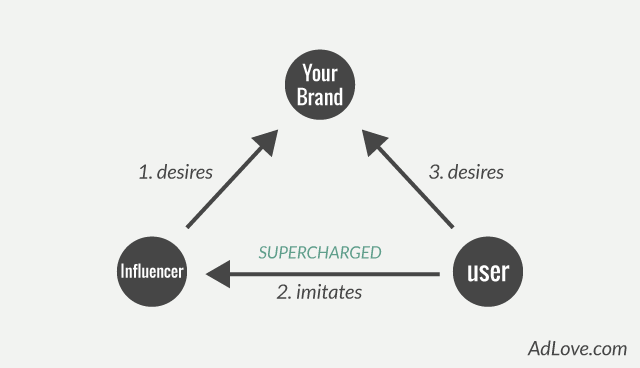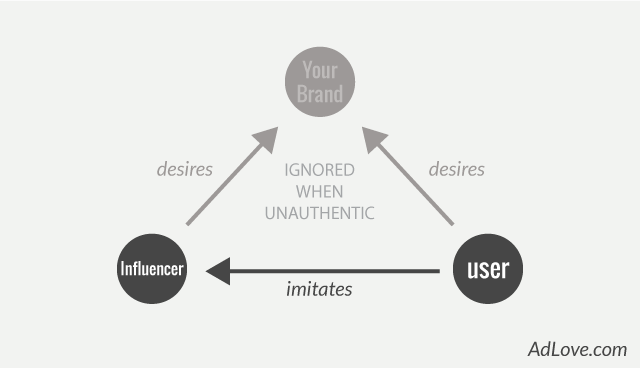Home > Ideas > 6 Advertising Strategies Used By The World's Biggest Brands
6 Advertising Strategies Used By The World's Biggest Brands
This is the text version of this infographic.
Advertising often comes across as disingenuous because of the inherent conflict it represents; people want to feel like they make their own choices but the context of an ad is that someone is trying to sell you something. The great brands understand this problem well and have figured out creative strategies to overcome it. The following infographic explains 6 such strategies.
Summary
| Champion | Strategy |
|---|---|
| Apple | Express identity through admiration. |
| Nike | Use authentic influencer endorsements. |
| Induce involvement with minimalist media. | |
| Netflix | Promote content on your platform. |
| L'Oréal | Make it up in volume. |
| Unicef | Channel the crowd. |
Strategy 1 Express identity through admiration
| Champion | Example |
|---|---|
| Apple | The ‘Think Different’ Campaign |
All you do here is express your company’s admiration for its own models and ideals.

Doing this authentically gets the end user to admire your values.

At the same time this associates your brand with your values.

The result is that the end user wants to embody your values. Since you have associated your brand with your values the end user sees using your brand as the best means of actualizing your values.

Strategy 2 Use authentic influencer endorsements
| Champion | Example |
|---|---|
| Nike | The ‘Freestyle’ Commercials |
Admirable people inspire imitation. Super admirable people inspire a lot of imitation. Here you leverage this dynamic by showing authentic endorsements from people who your target audience admires.

Authenticity of the influencer’s endorsement is critical here. Bribing influencers is not enough; if the desire portrayed is not authentic then the end user will not imitate it. The end user will pick up whatever the influencer’s true intention is and imitate that. It requires careful planning and selection to pull this off in a big way.

Strategy 3 Induce involvement with minimalist media
| Champion | Example |
|---|---|
| Google Search Ads |
All advertising aims to triangulate desire through the use of an intermediary model. The end user sees a model desiring a brand or product and – if the ad is set up well– imitates the model and ends up desiring the brand or product too.

This strategy involves using minimalist media to get the user to make her own model. Minimalist media forms provide very little data about who is communicating with you. This forces you to create your own communicator on the fly (just think about the audio track in your head as you read this). When done right the end user imagines an imitable model who is easy to assimilate.

The result is that you can successfully build brand with a large audience that spans different demographic categories. All with one simple ad creative.
Strategy 4 Promote content on your platform
| Champion | Example |
|---|---|
| Netflix | Billboards Promoting Shows |
In this strategy the only thing you directly promote is content on your platform. For some companies the definition of ‘content’ is obvious (e.g. shows on Netflix), whereas for others it can be more subtle (e.g. customers who successfully use your service).

Just like when expressing identity through admiration (strategy 1), you bolster the end user’s admiration for your values by selectively picking content that best embodies your company’s core values. The additional benefit is that you get an implicit endorsement from the content creator for having chosen your company as their platform.

Strategy 5 Make it up in volume
| Champion | Example |
|---|---|
| L'Oréal | “Because you’re worth it” ads |
More or less any message invokes imitation when repeated enough. In this strategy you make up for what your ad lacks in influencing power with sheer volume. The main challenge here is to get the economics to work; you either have to find a creative way of purchasing lots of advertising cheaply or have a great business model that makes large media buys possible.

Strategy 6 Channel the crowd
| Champion | Example |
|---|---|
| L'Oréal | Politically Correct Ads |
Crowds substitute for admirable people. The desire of a crowd invokes imitation in the same way that the desire of an admirable person does. This strategy leverages this effect to triangulate desire towards your brand.

You channel the crowd by using language, imagery and ideas that your target audience associates with social pressure. This forces a recollection of those moments of social pressure and automatically generates a similar response and reaction. The more directly you hit the cultural nerve, the more imitative pressure you apply.
Conclusion One law, many means
The above strategies are all ways of getting at the single law that governs all good advertising; the law of triangular desire. In order to get the end user to desire your brand you have to show them the desire of an imitable model. There are an infinite number of ways of doing this. These strategies are just 6 of them. Apply them to make ads that work really well.
by Aftab Singh, Founder of AdLove (@affalytics) | Ideas home
